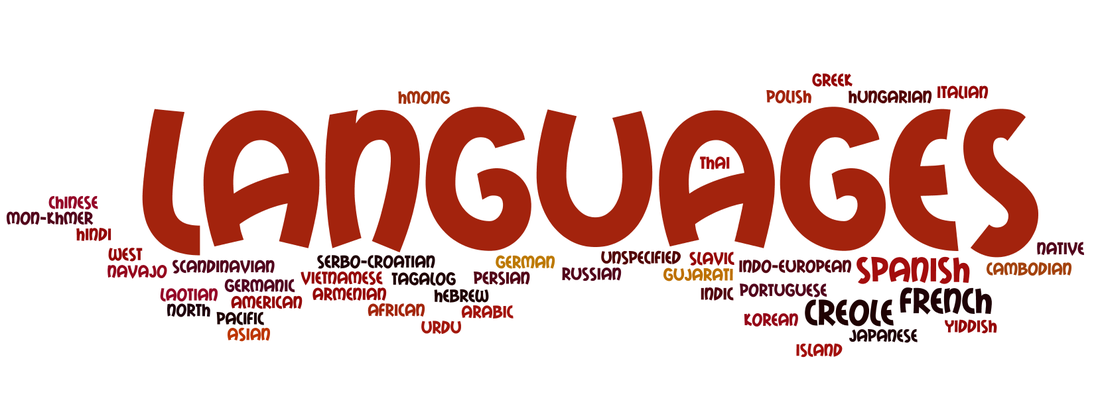 “The single biggest problem in communication is the illusion that it has taken place.” George Bernard Shaw. Communication problems exist even when talking to people in our own language. How many times have you left a meeting thinking everyone agreed to the plan and that everyone was working on the same goals, yet, it turned out that everyone did not agree and, in fact, they were all going off in different directions? These problems are only compounded when additional languages are introduced. If your team members are participating in their non-native language, it is virtually inevitable that there will be misunderstandings. As a leader, your job is to check-in with each team member to ensure that they understand and that team members are comfortable asking questions and to checking assumptions. As a team member, it is your responsibility to speak up, ask questions, confirm you understood properly, and raise flags.  "The difference between the right word and the almost right word is the difference between lightning and the lightning bug." Mark Twain If you are giving a presentation with non-native speakers in the audience, you should really consider hiring a professional interpreter who will not just translate word-for-word, but will ensure that the entire meaning is correctly relayed to the audience. Non-professional, bilingual speakers often think they know the right word, but it can be off just enough to confuse the meaning of the sentence. Translation and interpretation is an art form that requires an understanding of the subtle differences of word choice.  Tell them what you are going to tell them, tell them, then tell them what you told them. Aristotle Most of us have heard Aristotle's advice to tell them what you're going to tell them three times. This is even more important when your information will be relayed in a second language. By translating or interpreting the ideas multiple times, not only does the information get reinforced but also ambiguity is reduced. In meetings, take the opportunity to double and triple check that what you have said was understood and reiterate the action plan to ensure everyone agrees on next steps.  "The most important thing in communication is hearing what isn't said." Peter Drucker Peter Drucker's quote demonstrates the need to be aware of cultural biases. So much of communication is reading between the lines. How we convey information can tell us as much as what is said. More problems arise when we communicate cross-culturally and nuances can get lost in translation. All cultures have conventions that as natives we are hardly aware of: body language, looks, phrasing, tone, and ways of implying without coming out and saying what we're thinking. Much of this gets lost in language conversion, so if you're working with non-native speakers you need to be much more explicit than when dealing only with one culture/language. How many times have we heard that communication is key, yet we take it for granted. We have too many meetings every day, too much email hitting our in boxes, and hundreds of texts and online forum responses to make. Slow down and be very mindful of what you're saying and how you're saying it, and check-in frequently to make sure that your communication is two-way and that all parties agrees about what was said.
0 Comments
 In honor of world statistics day, we thought we'd share some stats that show how important it is for U.S. businesses to translate their marketing and product materials and hire interpreters for events for domestic audiences. 55 million people in the U.S. speak a language other than English at home, close to 20% of the population. 62% of those 55 million people speak Spanish or Spanish Creole. Of the remaining 21.9 million people, 20%, or roughly 11 million of them speak 9 different languages. The balance of people, 10 million, speak 28 different languages (or derivatives of those languages.)
So the next time you tweet out to your followers or upload a video, think twice about just releasing it in English. There are a whole lot of people out there who may want what you're offering, if only you'd advertise it in their language. Source: 2006-2008 American Community Survey. Image source: http://www.printsome.com/blog/2015/creativity-gone-wrong-when-brands-translate-and-fail/ When companies rely on in-house bilinguals for localization work it's often due to budget constraints or an inadequate understanding of the complexities of localization. Short cuts in this field generally lead to problems down the road. As a friend of mine once said, "never time to do things right, only time to do things twice." Hiring a localization company to oversee and project manage your company's localization effort may look more expensive than tapping bilingual Joe in the cubicle down the hall, but going the professional route is likely to save you both time and money down the road, and you're less likely to damage your brand in the process. Here's why: 1. The localization company has been there and done that. We've taken lots of companies through the process. We know how to organize your project so that there is minimal need for re-work. We work with you from the start to set up a project glossary that defines important terms to ensure that they are translated the same every time. We factor in time for the editing and review process, and we can help you with all your marketing channels, from print, to website, to social media, to video. 2. We map out what needs to be converted. For example, we know when the Spanish speaking countries in which you are launching have dialects sufficiently different as to require their own project streams, preventing embarrassment down the road from translation mistakes. 3. Our professional linguists don't just translate, they transcreate. It's not adequate to translate word for word, because it's the context and nuance that matters. Professional linguists take what you have written and recreate it in the target language so that it truly means the same thing as the original. 4. Social Media is unforgiving. These days it takes seconds for posts to go viral. That means if you accidentally use the word embarazar when you meant avergonzar, your'e going to be in hot water. And, the whole world will know it instantly because you've just confused pregnant with embarrassed. It's happened before. In fact, the Parker Pen company claimed that Parker Pens "won't leak in your pocket and embarrass you." However they mistranslated it to "No te embarazará chorreándose en tu bolsillo", which means "Won't leak in your pocket and impregnate you."1 Imagine if that had been posted to Instagram! 5. Version control. If you take on the localization in-house, chances are you'll be farming it out to many different people potentially in many different locations, and that means that changes in the text may get lost across channels and languages. A localization firm will provide a dedicated project manager who's job is to keep those changes straight and make sure they flow through your entire project. These are just a few of the reasons why it saves time and money in the long run to hire a localization firm to adapt your product and marketing materials for international markets. For more tips, read our Translation Insights. There are enough challenges to moving into international markets. Make sure your own materials don't become an obstacle to success. 1. Wikipedia: https://en.wikipedia.org/wiki/Embarazada Global market expansion usually means working with teams in the new countries. These international teams are integral to the success of your projects and your company, and team leaders need to adjust how they manage their people in order to meet their goals.
1. Choose a corporate language. Most companies agree to conduct business meetings in English, if there are teams collaborating from multiple countries. While team members may not be fluent in English, chances are that everyone will know enough to get by. However, because English is not everyone's native tongue, when teams are on conference calls, the native English speakers need to speak slowly and clearly so that the international teams have a greater chance of following along and understanding what is said. 2. Be sensitive to cultural differences. In some cultures, it is impolite to disagree in public, or to jump into a conversation without being recognized first, or to present ideas that are not fully thought through. If you are leading the meeting, make sure you ask for input from your quieter team members. Explain offline to your international teams what you expect during meetings. Do you do a lot of brainstorming? Do you want ideas to be challenged in the moment? Set guidelines for in-meeting behavior that everyone understands. 3. Expanding on the cultural differences issue, consider bringing in a cultural awareness coach to talk to your teams about the difference in cultural norms between countries, and other business etiquette issues that you and your teams may not be aware of. Undergoing some training in these areas can really boost camaraderie among globally dispersed teams and improve productivity as people gain an understanding of how others work and communicate. 3. If at all possible, send out an agenda the day before your meetings so that whichever time-zone your team members are in, they will have adequate time to prepare. For standing meetings, follow the same format from meeting to meeting so that everyone knows what to expect. In some cultures, employees need to confer with their local management before jumping on a conference call with their global team. Give them the time they need to be prepared. 4. Reiterate what is said on the call. Summarize others thoughts and check that you and the group understood properly. Send out a list of action items after the meeting, and recap conclusions that were reached. Invite participants to ask clarifying questions and to tell you if they didn't understand what was said. Work to create a culture where it's okay to ask someone to rephrase or re-explain their thought. 5. Spend some time at the beginning of each call connecting team members on a more personal level. Give team members a chance to talk about what they did over the weekend, or what they're planning to do. Ask about an upcoming holiday celebration. Even the weather will do in a pinch. If you can re-create a water cooler feeling for a couple of minutes, it will help your team bond. 6. Establish how team members prefer to communicate when not on a call. Tools like Slack can be extremely useful for keeping everyone up to date, but they can also resemble a fire hose. Gain agreement on what should be emailed, how fast you expect team members to respond to email, what should happen in online forums, and appropriate hours for phone calls. The more aware you are of cultural differences, the more social norms you create that cross country and cultural boundaries, and the more you work to connect team members on a personal level, the more productive your global team will be. |
Author
Archives
March 2024
Categories
All
|
Photos from : : Ys [waiz] : :, bjahind, fabola, MattysFlicks, @sage_solar, LoS, Traducción e Interpretación, Kyle Taylor, Dream It. Do It., _gee_, keepitsurreal, One Way Stock, Airviewsphotos, GotCredit, efile989, Benoit cars, ** RCB **, stephiesal853, Francisco Anzola, Highways England, ITU Pictures, VIPevent, leoplus, Karsten Bitter, Jolante, jobstop11, Nguyen Vu Hung (vuhung), jurvetson, mikefats, YooSan, sandrafdzh, roland, mikecogh, y entonces, Donald Lee Pardue, Gatorgoon, daniel0685, BÜNDNIS 90/DIE GRÜNEN, rick, {Guerrilla Futures | Jason Tester}, mikecogh, markyharky, amslerPIX, jo.sau, IAEA Imagebank, lisa-skorpion, Toronto Public Library Special Collections, Wootang01





 RSS Feed
RSS Feed
